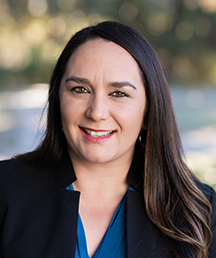• by Stephanie García, Ph.D., and Asmaa Mansour • IDRA Newsletter • October 2020 •




But when it comes to providing access to STEM education, we still have a problem. Many inequities exist, including the underrepresentation of women and people of color in STEM pathways. According to the National Science Foundation (2017), there is a severe underrepresentation of students of color graduating with science and engineering degrees. Women earned only 22% of bachelor’s degrees in engineering and only 25% of bachelor’s degrees in mathematics and computer sciences in 2017.
These gaps translate to substantial underrepresentation in STEM careers. The National Science and Technology Council reports that, while making up half the population, women comprise less than 30% of the STEM workforce (Vought, 2018). Labor projections indicate that Texas, for example, will have the second-highest proportion of the nation’s future STEM job opportunities (TEA, 2020). But the state’s Class of 2018 only had 27% STEM graduates.
Many STEM initiatives have become a priority across the nation, such as more STEM programs, federal investments to support STEM education, and support from local and national businesses and professional societies (Vought, 2018).
STEM is often reserved for students with inherent privileges, thus creating monumental barriers for women and students of color.
Inclusion in STEM is a frequent topic of discussion and remedy offered among educators and stakeholders in countries across the world. It is important to understand, however, that inclusion alone will not increase STEM equity and access. Increasing inclusivity is often a surface-level response resulting in the “essence of equity” without any true transformation or liberation. It can become a tokenistic approach that is performative and uses women and people of color as props for diversity and equity.
Making STEM truly accessible requires dismantling structures that perpetuate inequities and traumatize and “other” women and people of color. Major shifts can occur in K-12 and postsecondary classrooms, including transforming leadership and pedagogical practices.
See STEM’s Cultural Context
One recommendation is to bring “minoritized students of color’s political struggles and historical oppression to the present moment inside the classroom” (Calabrese Barton & Tan, 2020). This is easy to do because, historically speaking, STEM education has been built on research and methodologies that exploited its “subjects” who often were from marginalized communities. There are many opportunities to study STEM in its “socio-cultural, socio-historical and socio-political contexts” (Moore-Mensah, 2020).
Application Strategy 1: Introduce curricula that incorporate ethnic studies into the STEM areas. A great resource to consider using is “Rethinking Mathematics: Teaching Social Justice by Numbers” (Gutstein & Peterson, 2013). It provides real-world math lessons for multiple grade levels and topics that help “students analyze social problems as they gain essential academic skills.” Try the lesson entitled, “Chicanos Have Math in their Blood” and build in time to discuss the struggles Chicanx communities face and the contributions they have made to the math field.
Honor STEM Belonging
It is important to assert that our female and students of color have a rightful presence and legitimate belonging in STEM fields. Students of color should understand that they do not need to “reconfigure themselves toward the dominate white, patriarchal, English-speaking culture” traditionally found in STEM education (Calabrese Barton & Tan, 2020).
We can move toward this “rightful presence” in STEM by engaging students in critical dialogue, helping students see through “invisible” injustices, disrupting knowledge and power hierarchies and relations, and positioning students as experts and critics on what they are learning (Calabrese Barton & Tan, 2020).
Application Strategy 2: Acknowledge, research, and discuss the stories and contributions from women and people of color in STEM as it relates to the topic of study. Believe it or not, storytelling is effective in every discipline, especially STEM. Students value hearing about the historical and current “hidden figures” who are innovators and trailblazers in the field. Take time to research outside of the traditional canon of scientists and mathematicians so all students can see themselves in the field and relate to their experiences. (Also see IDRA’s infographic: 11 Women Scientists.)
Build on Student Experience
STEM educators may need to develop an understanding of their students’ experiences with oppression and see the impact it has on their learning. There are many ways educators can connect STEM content, for example, to students’ home knowledge, identity and the experiences they bring to the classroom (Moore-Mensah, 2020).
Application Strategy 3: Sustain positive relationships with your students by building in opportunities to learn from them. Students’ cultural identities are part of their STEM identities, so continue to foster both in a safe and welcoming space. Consider having students demonstrate their understanding in a way that makes the most sense for them (for example, present in their first language or create multi-modal formative assessments).
STEM is often reserved for students with inherent privileges, thus creating monumental barriers for women and students of color. In efforts to change the course of STEM access, we must hold high expectations for all students and support them in getting there (Moore-Mensah, 2020). We must continue to assess behaviors, ideologies and policies that oppress students in STEM spaces and classrooms. We must also consider what sustainable and systematic core changes need to occur to truly change the trajectory of STEM access, broaden participation and increase impact for all students.
Resources & Tools
Learn about the IDRA Texas Chief Science Officer program that builds student leadership skills to advocate for STEM among peers.
Get “Rethinking Mathematics – Teaching Social Justice by the Numbers” that provides teaching ideas, lesson plans, and reflections by practitioners and math educators.
See “Closing the STEM Gap” by AAUW for strategies and to download STEMpacks with complete lesson guides and materials for hands-on learning.
Get IDRA’s “Science Instructional Strategies for English Learners ~ A Guide for Elementary and Secondary Grades” with research-based strategies and a matrix of techniques for implementation.
Resources
Calabrese Barton, A., & Tan, E. (2020). Beyond Equity as Inclusion: A Framework of “Rightful Presence” for Guiding Justice-oriented Studies in Teaching and Learning, Educational Researcher.
Moore-Mensah, F. (2020). “A need for anti-racist/abolitionist science teaching,” presentation.
NSF. (2017). Figure 2-8: Demographic Attributes of S&E Degree Recipients, Higher Education in Science and Engineering. National Science Foundation.
Gutstein, E., & Peterson, B. (2013). Rethinking Mathematics: Teaching Social Justice by the Numbers. Milwaukee, Wisc.: Rethinking Schools.
TEA. (2020). Science, Technology, Engineering, and Mathematics Education (STEM), website. Austin, Texas: Texas Education Agency.
Vought, R.T. (2018). Charting a Course for Success: America’s Strategy for STEM Education. Committee on STEM Education, National Science and Technology Council.
Stephanie García, Ph.D., is IDRA’s STEM and gender equity education specialist and directs the IDRA Texas Chief Science Officers program. Comments and questions may be directed to her via email at stephanie.garcia@idra.org. Asmaa Mansour served as an educational practice intern with IDRA in the summer of 2020.
[©2020, IDRA. This article originally appeared in the October 2020 IDRA Newsletter by the Intercultural Development Research Association. Permission to reproduce this article is granted provided the article is reprinted in its entirety and proper credit is given to IDRA and the author.]


